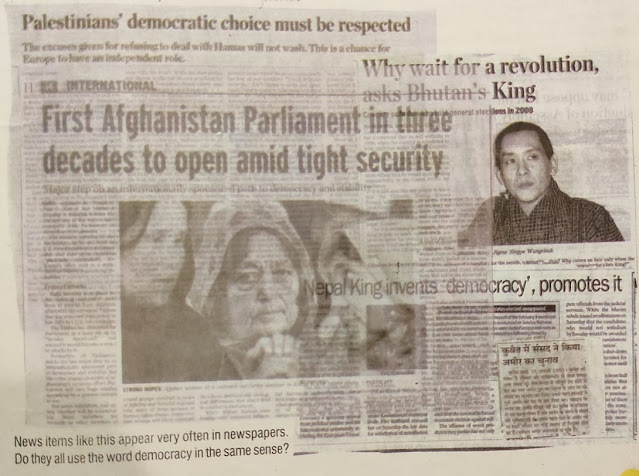5.Chapter 2.S.St.Shifting Habitation
Chapter 2
Shifting
Habitation
2 Shifting
Habitation Migration or shifting means change of residence from rural to urban
areas, from urban to rural areas or from one country to another. Mankind and migration have been linked to
each other since the ancient times. Life
would not have been possible without migration.
The ancient man migrated from one place to another in search of food and
shelter. He began living a settled life
when he became a producer. He grew crops
on a piece of land till the soil was fertile.
People who follow shifting agriculture He abandoned it when it lost its
fertility. Then he grew crops on a new
piece of land. This was known as
shifting agriculture. This mc hod helped
the soil to regain its fertility to produce better cops. However, this type of migration was carried
out within a limited area. People were
scared to travel to far away places due to many myths and superstitions. During the British period, this orthodox
thinking underwent a great change owing to spread of modern education. The British encouraged Indians to migrate 7
overseas to
set up or work in British colonies. Many
Indians signed agreements to go abroad for a fixed time. After that they had the choice either to come
back or stay on in the foreign lands.
Moreover, educated Indians did not believe in the superstitions. They enjoyed traveling abroad. In present times, migration is quite common
all over the world. There are many
reasons behind this like - • People migrate for financial stability and better
job prospects. • Some people send their
children abroad for a better standard of living. • Many people migrate for better educational
opportunities like schools, colleges or professional institutes. • Some people migrate to get political rights
due to loss of faith in their own country.
People also migrate after marriage to different parts of their country
or abroad ,. Migration is like a
chain. The first person who migrates
sends "Happily Settled" information to his / her loved ones in the
native country. Then others also migrate
to the same country. In such cases, the
migration is voluntary. Sometimes the
migration is forced. It may be due to a
natural disaster, i.e. flood, famine,
landslide, tsunami, earthquake, etc. Do
you know? The Kosi River is known as'
Bihar's Sorrow as the frequent floods cause massive destruction. The floods destroy hundreds of human and
animal lives, homes and standing crops.
Flood affected areas of Kosi 8
Many people
have to migrate due to man - made disasters like fire, terrorist activities,
clearing of area for construction of a dam, housing complexes or widening of
roads. Sometimes people are forcibly
shifted out of their homes by some powerful group. Demolition of some illegal colonies or the
loss of employment opportunities also account for migration. Unfortunately, whatever the reason may be,
the poor are the worst affected. Look at
the picture. Krishn and his friends are
going to Punjab in search of employment.
This is seasonal migration as large number of labourers are required at
the time of sowing and harvesting crops.
They work on farms where wheat, rice or sunflowers are grown. Krishna with his friends going to sometimes
the workers / peasants are Punjab attracted by better wages and better living
conditions. But most migrant workers
have to face many hardships. They have
to live without basic facilities, such as shelter, sanitation or safe drinking
water. The condition is worse when they
migrate with their families. The women
and children face many problems. They
have to live a life of loneliness, far away from their relatives. The children cannot get even the basic
education and thus, remain illiterate.
Do you know? The massive
migration of rural work force to urban areas has resulted in women taking over
the cultivation of small landholdings to run their houses. Many farmers had to move to urban areas and
give up their traditional occupation of agriculture after they lost their land
to zamindars and money lenders. People
following other occupations, which were dependent on agriculture, also had to
shift from rural to urban areas. 9
Ram, a
blacksmith of Rampur, in Uttar Pradesh, had to migrate against his wish to earn
money to feed his hungry children. Most
of the farmers in his village were hit by the drought. All agricultural activities had come to a standstill. There was no work for Ram. Most able - bodied persons from his village
had shifted to cities to work as casual labor - carrying loads, working at
dhabas or construction sites. Some
people were even forced to beg. Ram - a
migrant Strangely, the suffering of migration is not limited to villagers or
illiterates. Many rich and highly
educated couples settled in urban areas or foreign countries also face many
problems. They live away from their
families. Though they earn a lot of
money, they lack the companionship provided by the family. In urban areas, they have to spend long hours
in traveling over long distances. They
are unable to devote much time to the children, who are mostly looked after by
the servants. These children miss out on
sharing, caring and values that are a part of traditional joint family
system. However, migration also brings
happiness to many people. Migration
between India and Nepal has existed since olden times. Many Indians moved to Nepal from Bengal,
Bihar, Rajasthan and Uttar Pradesh hundreds of years ago. They carried Indian culture, religious
beliefs, customs and traditions with them.
It led to the building of a unique mixture of the two cultures. Indian Constitution recognizes Nepali as one
of the 22 official languages of India.
10

Comments
Post a Comment